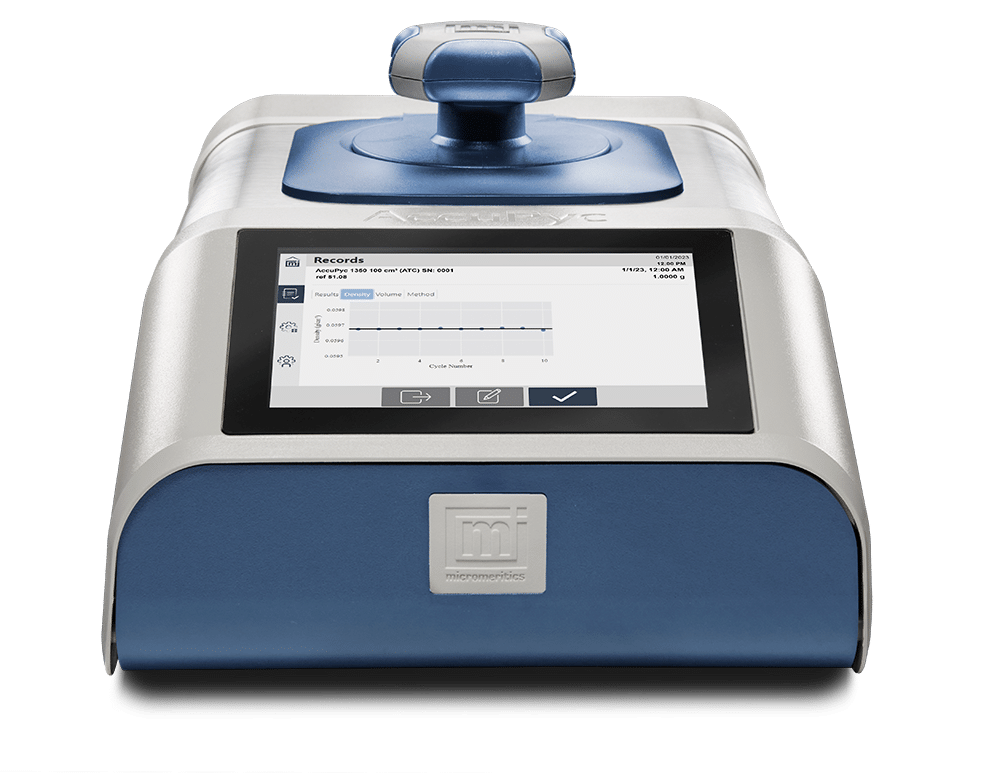AccuPyc III 1350 Gas Pycnometer
The fastest, easiest, most accurate measurement of true density
The AccuPyc gas pycnometer from Micromeritics is trusted around the
world to provide the most reliable measurements of true density. More
labs choose an AccuPyc than any other commercial gas pycnometer.
The AccuPyc delivers the highest available accuracy and repeatability
in a system that is fast and easy for any operator to use.
Gas displacement pycnometry
Gas pycnometry is used to determine the true, or skeletal density of solid materials and slurries. A sample is placed in a chamber of known volume, which is sealed and pressurized. The gas fills the empty spaces within and between the sample particles. The sample chamber is then expanded to an adjoining reference chamber of known volume. The change in pressure is used to calculate the volume of the sample. True density is calculated from the sample mass and the volume it occupies. This method is useful for determining the true density of materials, even those with small pores and irregular shapes.
Defining density
The AccuPyc provides an accurate determination of the True (Absolute) Density by gas pycnometry. This is important for porous and particulate materials because it excludes empty spaces associated with pores and interparticle voids. For materials with closed pores, those pores are included in the volume measurement and the density reported is a Skeletal (Apparent) Density.
The GeoPyc is a helpful complement to the AccuPyc as it directly measures the: Bulk Density, the Envelope Density including pores, and the T.A.P. density incorporating consolidation stresses. Bulk and envelope density measurements from the GeoPyc can be used with true density from the AccuPyc to report pore volume and porosity.

Ready to find out more?
Download the brochure now!
- Hinged, self-aligning lid
- PowderSafe mode
- MIC NET data and method synchronization
- Manged method library
- WiFi Connectivity and 3 USB ports
- USB Balance integration
- Vacuum and pulse sample preparation
- FoamPyc methods
- NIST-Traceable volume reference
